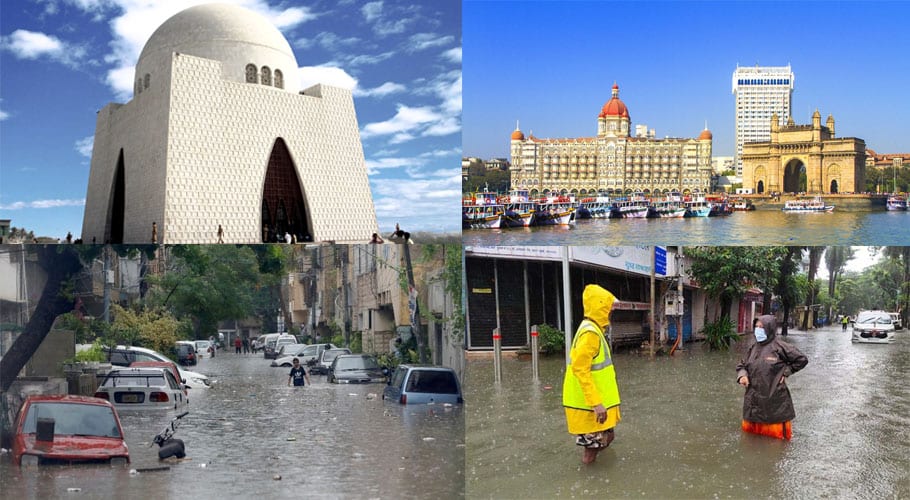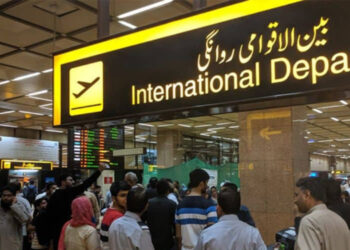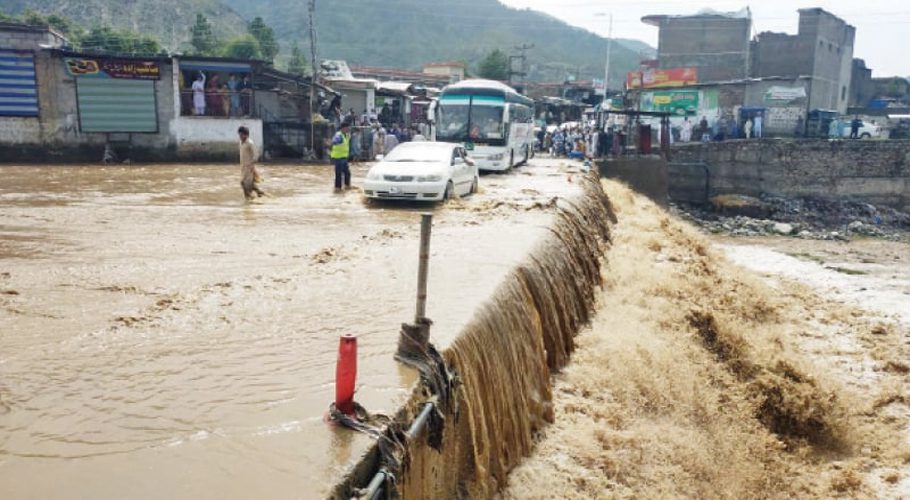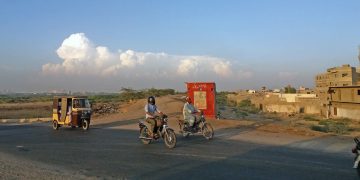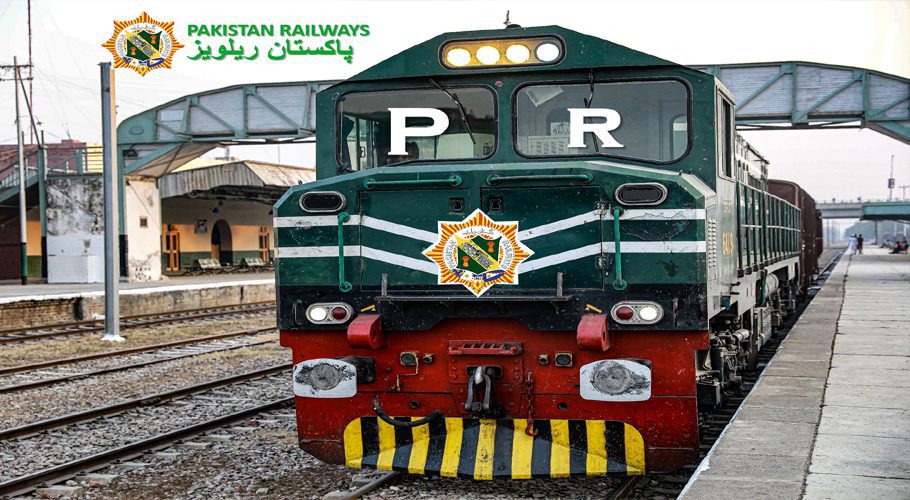Like every year in the monsoon season, Karachi braved spells of devastating urban flooding that caused a complete breakdown of urban life.
This year, Karachi experienced torrential rain as per the Pakistan Meteorological Department’s (PMD) near accurate prediction.
Floods because of recent rains, particularly on August 24, 25 proved to be much more disastrous mostly in Karachi’s two most populous districts – Central and West.
Several roads, streets, and homes were flooded with rainwater. Commuters were stranded on roads during rain and in many parts of the metropolis people and cattle suffered electric shocks.
Residents of the low-lying areas suffered property damage amounting to millions of rupees following an hour-long downpour.
NDMA clean-up drive
A few days after the devastation caused by rains in the second spell, Prime Minister Imran Khan had directed the National Disaster Management Authority (NDMA) to start the clean-up in Karachi.
The agency sprang into action on August 3 with military assistance and started clearing the city’s drains. However, this is a short-term fix amidst a blame game between political actors.
Political blame game
The Pakistan Peoples Party-led Sindh government, the Muttahida Qaumi Movement-Pakistan led Karachi Metropolitan Corporation (KMC) and Pakistan Tehreek-i-Insaf-led federal government continue to blame one another over Karachi’s issues.
Mayor Waseem Akhter laments the lack of funds and his limited powers and the Sindh government’s non-cooperation, saying that he is a toothless mayor of the metropolis where there are too many decision-makers.
Provincial Ministers Nasir Hussain Shah and Saeed Ghani in a press conference said that after the recent rains the media had given the impression that Karachi was submerged. They said this year the situation was much better than last year.
Many provincial lawmakers faced backlash for posting images of selected main roads, including Shahrah-e-Faisal – lauding the Sindh government for clearing it from rainwater within a few hours.
Residents said that provincial lawmakers were trying to misrepresent the condition of the metropolis as several low-lying densely populated residential areas were actually submerged in rainwater.
KMC responsible for major stormwater drains
The KMC is responsible for 41 major stormwater drains while 500 minor drains fall under the purview of the six District Municipal Corporations in the city.
On the other hand, the responsibility also lies with the Karachi Water and Sewerage Board and Sindh Solid Waste Management Board – two bodies operated under the Sindh government that have failed in their responsibilities to clean the drains and remove and dispose of the garbage and solid waste.
In the beginning, the PPP leadership was angry over the federal government’s decision to send NDMA to ‘clean’ Karachi, calling it a conspiracy against its provincial government.
Although, lately, the provincial government appreciated the measures taken by the NDMA and assured its support and cooperation to complete the job before the next spell of rain in Karachi.
The NDMA said that the provincial government had agreed to clean 19 drains while the Frontier Works Organisation (FWO) had been tasked to remove garbage from Gujjar, Korangi and Mowach Goth drains.
Issues solution under constitutional cover
The city has been facing this tripartite conflict long without any solution in sight. The Supreme Court has been taking up the city issues since 2011 when the former chief justice of Pakistan Justice Iftikhar Muhammad Choudhry took suo motu notice of city’s law and order problem.
However, the city is still short of a permanent solution as governments mostly looked for ad hoc steps.
Karachi is mired in administrative and political problems. Multiple mafias have been controlling city since long in connivance with all major agencies responsible for the supply of water, electricity, gas or other civic amenities.
PM Imran Khan, who has discussed the issue of Karachi with his legal team, is now considering different options under the Constitutional cover.
Still flooded
Water and filth that inundated major arteries in the different areas had receded by Tuesday night, leaving behind a huge swamp of mud as well as monetary losses for the residents.
In Orangi Town many stormwater drains overflowed again on Tuesday. In District West’s Chishti Nagar rainwater could not be drained from houses.
Rainwater accumulated in Laiquatabad, Baldia town Landi Kotal Chowrangi, Five Star, Sakhi Hassan, Sultanabad and KDA Chowrangi areas was still not cleared.
Due to a nullah’s wall collapse, houses and shops in District Central’s Kashmir Colony, Pak Colony, Mehmoodabad and Waheedabad areas continued to remain flooded.
Water from shops and houses in Liaquatabad could not be drained after the Gujjar Nullah overflowed in the neighborhood.
While no Central DMC machinery was in sight, citizens were seen drying up mud puddles on their own.
The roads were still underwater including Liaquatabad, Gulberg’s Peoples Chowrangi, with the nullahs continuing to overflow.
The minor stormwater drain at the median of Peoples Chowrangi and Gulberg Town carries water to the Gujjar Nullah, which was chock-full.
Several areas were covered with a muddy swamp and the garbage that the overflowing drains had brought in.
Lost money
Shops and markets situated in Golimar, Shahrah-e- Faisal, Garden, Laiquatabad, Landi, Baldia Town, Gulshan Hadid and Orangi town faced losses of millions of rupees.
Several cars and motorbikes were also destroyed in District Central and Gulshan Hadid areas and mechanics were not available to fix the vehicles that had broken down.
Power outages
Amid all this chaos, several areas of the city continued to face power outages. Electricity supply to most of the areas in the Central and West districts that were flooded could not be restored.
The hours-long spell, which began before sunrise on Tuesday and continued till night, broke previous records of rainfall recorded in the city during August.
The Met department said that Karachi had received 345mm of rainfall so far in August, breaking the previous record of 298mm reported in August 1984.
Despite the predication provincial government completely failed to manage the situation. During the rains, several people lost their lives in the city.
Need federal government role
Karachi’s topography has been altered without any regard for the overall form of the city. Whether it’s widening a road, constructing an underpass or a settlement, only local engineering benchmarks are taken into account for the sake of corruption by the political actors.
This causes disasters like the present episode, and the flooding alongside the Super Highway and its adjoining areas is an example.
Coordinated decision and strict monitoring of corruption from lower to higher levels is necessary to prevent such disasters.
Identifying the boundaries of Karachi, its population, and the nature of the problems, there is an urgent need for the federal government to play its role in natural disasters and extraordinary circumstances.







